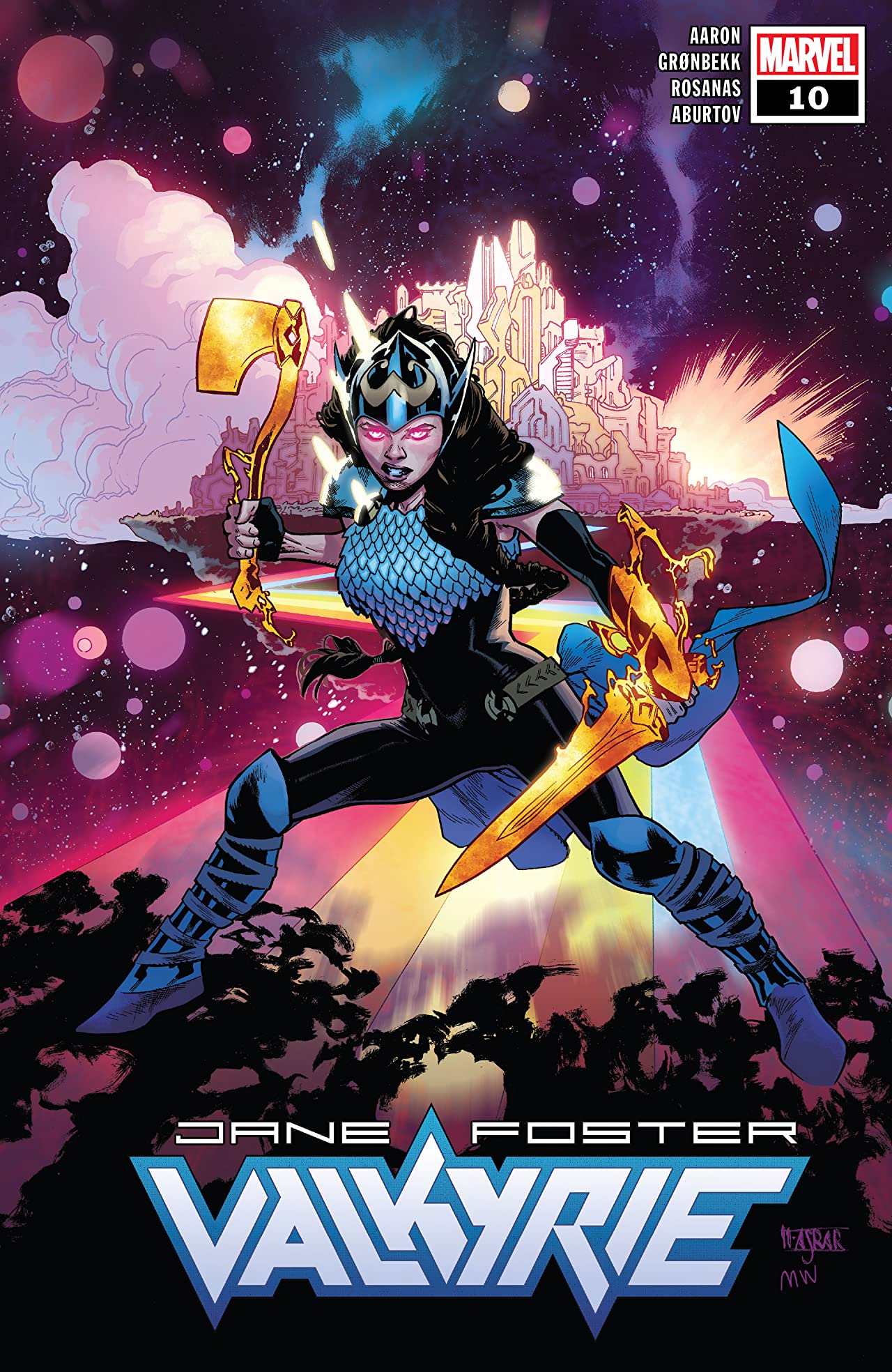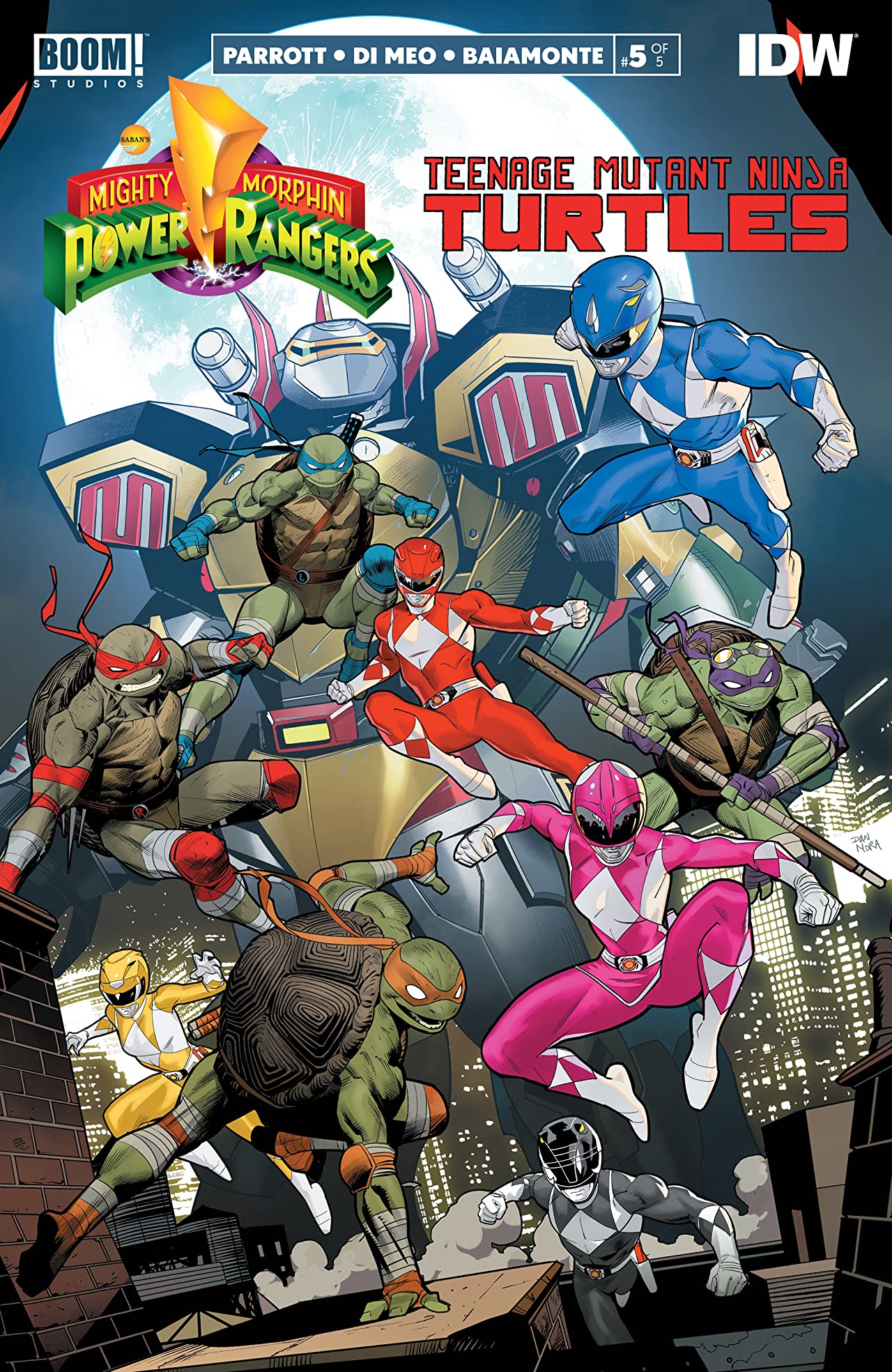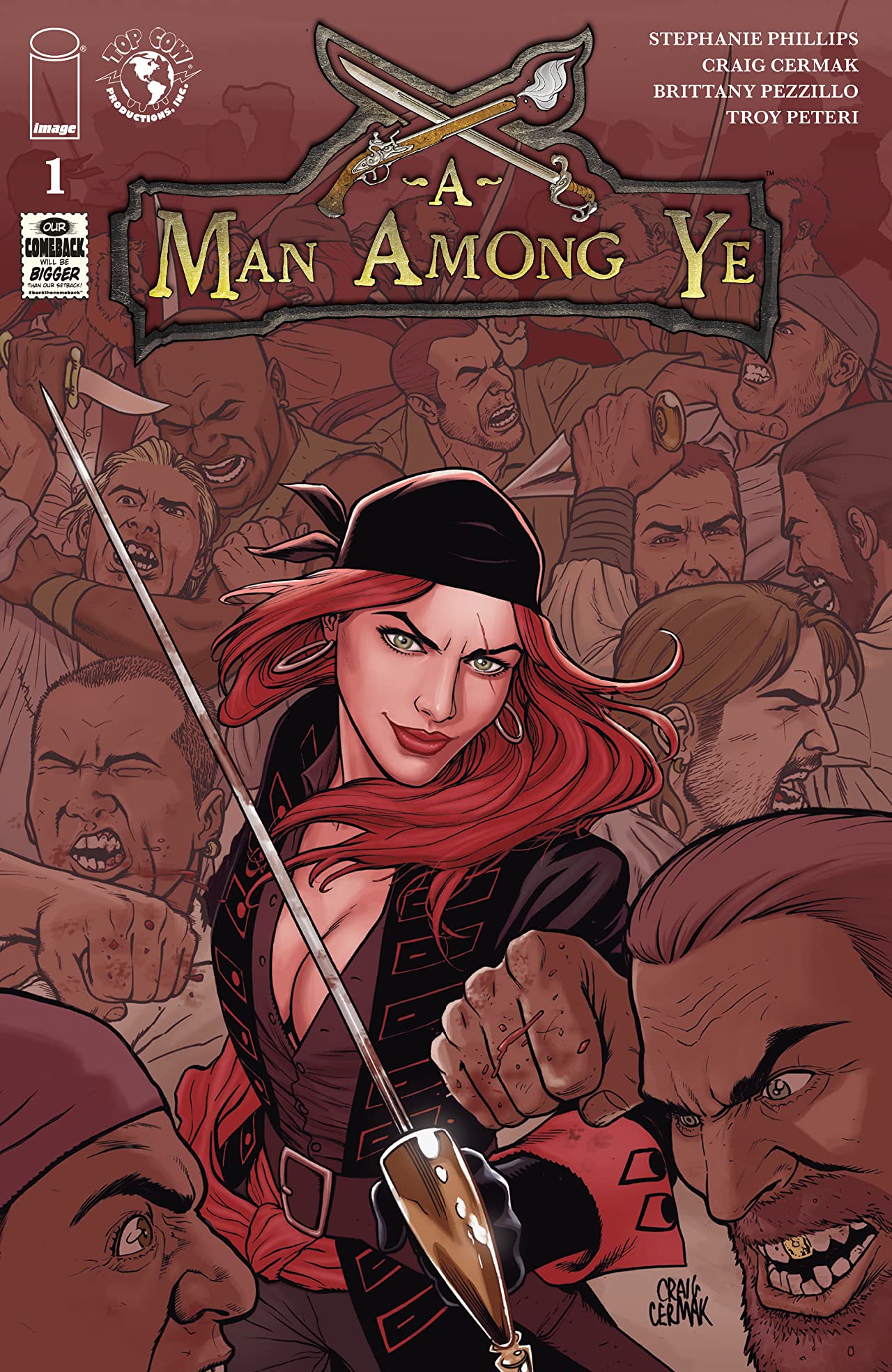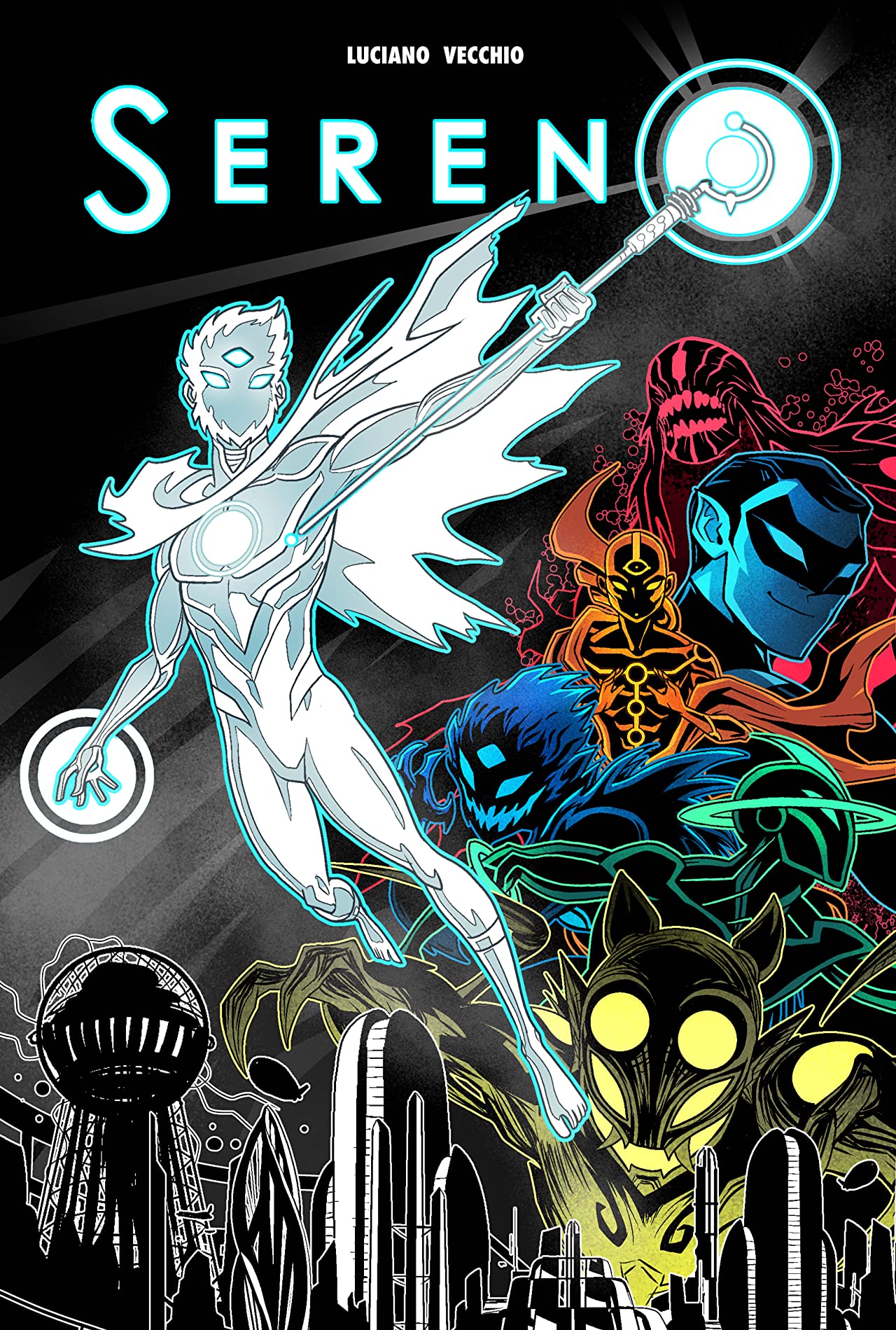Best Shots Rapid-Fire Reviews: Valkyrie #10, Superman #22, Wynd #1, more
Along with reviews of Ghost Spider #10, MMPR/TMNT #5, Ludocrats #2, A Man Among Ye #1, Sereno, and Join the Future #2

Greetings, ‘Rama readers! Ready for your pellets? Best Shots has you covered with this week’s Rapid-Fire Reviews! Let’s kick off today’s column with Kindly Kat Calamia, who takes a look at the latest issue of Valkyrie: Jane Foster…

Valkyrie: Jane Foster #10 (Published by Marvel; Review by Kat Calamia; ‘Rama Rating: 8 out of 10): Writers Jason Aaron and Torunn Grønbekk continue to test Jane Foster’s willpower as she enters the battle (without her All-Weapon) to defeat Thor’s brother Tyr, held in thrall to the anti-life entity itself Røkkva. The issue’s biggest strength is the exploration of Jane’s existentialism as she literally goes up against a monster made up of a void of nothingness. On visuals, artist Ramon Rosanas delivers some classic Thor action with a dash of heart — elements we’ve all come to know and love with Jane Foster's stories. Valkyrie: Jane Foster #10 is a solid conclusion to an arc that has challenged Jane both internally and externally, which has seamlessly become a staple for this re-invented Thor character.

Superman #22 (Published by DC; Review by David Pepose; ‘Rama Rating: 4 out of 10): Clark Kent has revealed his secret identity to the planet, and named himself Earth’s representative to the United Planets — what could go wrong? In the pages of Superman #22… honestly, not terribly much. Writer Brian Michael Bendis and artist Kevin Maguire cut between Superman battling Mongul and Agent Cameron Chase having a stern conversation with Lois Lane, but it’s hard to feel a lot of stakes or tension going on just yet. (While Clark might say "I always knew Mongul would bring us to the verge," I don’t really buy the threat he poses, especially since Superman takes him out with only the most minor of obstacles.) Maguire’s artwork feels particularly heavy with the inks this go-round, perhaps a side effect of working with colorist Alex Sinclair — but he winds up at cross-purposes with Bendis, since the dialogue against all his action-packed pages feels so low-key. Capped with a meandering ending, this isn’t the strongest showing from any of the creators involved.

Wynd #1 (Published by BOOM! Studios; Review by Matthew Sibley; ‘Rama Rating: 6 out of 10): Originally solicited as a series of graphic novels before a surprise retooling into single issues, Wynd #1 illustrates how longer volumes can afford to be more gradually paced, something which doesn’t easily translate across to a periodical format (even when this first issue is twice the length of a typical one). What makes this such a shame is how much life and a sense of place Michael Dialynas manages to evoke in making this first impression count. Pipewood and his character designs are picturesque, although talk of "Weirdbloods" indicates this is a place built on prejudice and persecution. James Tynion IV’s script first goes about showing who Wynd is — his job, friends, desires — before switching to another character’s perspective in order to establish another facet of the story, accomplished via a smart layout from Dialynas that makes the transition smooth. For the most part, the creative team — including letterer Aditya Bidikar — get off to a promising start, though this is blunted by the fact Wynd #1 doesn’t so much build to a conclusion as much as it just ends, a problem that wouldn’t exist in the series' original graphic novel format.

Ghost Spider #10 (Published by Marvel; Review by Kat Calamia; ‘Rama Rating: 5 out of 10): In a surprise finale, Seanan McGuire and Ig Guara wrap their Spider-Gwen run with an uneven last chapter. Ghost Spider #10 finds Gwen Stacy getting used to sharing her superhero duties with the Storm siblings, but in a twist of fate is informed there isn’t enough “clout” for the three of them to share the spotlight. There are a lot of interesting plot threads introduced as the Storm siblings’ villainy is revealed, but McGuire and Guara aren’t given enough real estate to properly wrap up this arc. There are countless story threads left untied as the Storms push Gwen out of her own universe, but what might be the most disappointing element is that Gwen doesn’t even put up a fight — she just packs her bags and says goodbye to her loved ones. It doesn’t feel like a true ending. On artwork, Guara continues to do a great job as he explores the Storm siblings’ past with a very interesting visual of Sue putting on the Doctor Doom costume — too bad we won't see a followup on this. Overall, Ghost Spider #10 isn’t a satisfying conclusion to McGuire’s solid run on the character, and it’s sad to see it end on what feels like an unfinished note.

Mighty Morphin Power Rangers/Teenage Mutant Ninja Turtles #5 (Published by BOOM! Studios and IDW Publishing; Review by David Pepose; ‘Rama Rating: 7 out of 10): Writer Ryan Parrott and artist Simone Di Meo wrap up this fan-service crossover for the ages, but even they struggle to get in everything they want to say in just the span of 20 pages. This issue feels the most like a traditional Power Rangers structure, culminating in a team-up between the Megazord and a giant Metalhead against a monster-sized Bebop and Rocksteady alongside a Shredder-piloted Dragonzord. For plenty of readers, that last sentence will be worth the price of admission alone, and I don’t blame them — Di Meo’s artwork looks kinetic and sharp as ever, even if the giant robots start to crowd out his pages a bit. But even with crowd-pleasing moments like the Zords coming together, Parrott has to rush to get across three separate endings, with bits like Shredder and Rita Repulsa’s conclusion still being left in the air, while the final fight between Raphael and Tommy is fun but not necessarily needed amidst everything else. If anything, a bigger page count for this last issue would have made this ‘90s kid fantasy team-up a total knockout, but given the strength of the previous four issues, this series still ends with a solid win.

The Ludocrats #2 (Published by Image Comics; Review by Matthew Sibley; ‘Rama Rating: 7 out of 10): It’s easy to sum up to the premise of The Ludocrats #2 — Steam-Judge Grattina was arrested for the crime of being boring, while newly infatuated Baron Otto aims to rescue her from imprisonment inside a creature called The Cloud Caterpillar — and much less so to properly convey its madcap energy. Namely, how the specifics of the narrative play second fiddle to writers Kieron Gillen and Jim Rossignol crafting scenarios that allow for as many gags as possible. Compared to Gillen’s generally emotionally resonant output, this series tracks as delightful yet a minor work all the same. It’s also a book that has to be seen to be believed, in order to see how well artist Jeff Stokely and colorist Tamra Bonvillain capture these larger than life characters and oddball world. Their pages bristle with energy, matching the relentless pace of the plotting, yet the book never turns incomprehensible, filled with visuals like a chainsaw-wielding gastronaut rappelling down a string of sausages as if it were a rope. As entertaining as these farcical endeavors are to this critic, it is also understandable not everyone will be able to get on the creative team’s wavelength of taking screwball antics to an illogical end.
Get the best comic news, insights, opinions, analysis and more!

A Man Among Ye #1 (Published by Image Comics/Top Cow; Review by Kat Calamia; ‘Rama Rating: 4 out of 10): Writer Stephanie Phillips and artist Craig Cermak adapts the real-life story of female pirate Anne Bonny in their new Top Cow debut, but fails to tap into what makes her such an interesting historical figure. This debut issue focuses more on action and less on why readers should care about this pirate story in particular — besides the fact that Anne Bonny is a woman in a male-dominated profession, which, might I add, isn't explored to its fullest. It all feels very surface-level, which was disappointing because with the character’s rich history there’s a potential to be so much more. However, the strongest aspect of the issue is Cermak’s clean pencils and Brittany Pezzillo’s bright colors — it gave a unique vibe to a genre that usually leans more towards grittiness. Overall, A Man Among Ye doesn't succeed to tap into Bonny’s unique experience as a female pirate in the 1700s, making this a less-than-memorable debut.

Sereno OGN (Published by Comixology; Review by C.K. Stewart, ‘Rama Rating 8 out of 10): Luciano Vecchio has done exceptional illustrative work for Marvel and DC in the past, but Sereno is on another level entirely. Originally published as a webcomic and now available as a collected volume this week Comixology, Sereno is Vecchio’s first graphic novel and puts the full extent of his visual skill on bold display. Sereno follows the titular superhero through the hyperfuturistic city of Nueva Teia as he battles dark entities that seek to poison the spiritual energy of the city. The art is gorgeous, with the limited palettes and vibrant spot colors creating a unique and immersive world from the jump, and Vecchio’s action sequences are second to none — Sereno at times feels like it’s moving a mile a minute in the most exciting way. The dialogue and characterization fall a bit flat at times; the dialogue may be a result of some of the spirit and nuance of Vecchio’s original scripts getting lost a little in the English translation, but you also don’t get to learn too much about Sereno’s civilian life or really anyone else encounters, including his love interest Rufian (whose design and brief appearances in the book are absolutely delightful -- that’s charm, as Rufian himself would say). Sereno is extremely cool all the same, and it would be great to see Vecchio revisit Nueva Teia in the future.

In Case You Missed It!
Join the Future #2 (Published by AfterShock Comics; Review by Kat Calamia; ‘Rama Rating: 7 out of 10): Following a jam-packed premiere, Join the Future #2 slows things down as our main character, Clem, deals with the devastation of losing her family and her home. Writer Zack Kaplan and artist Piotr Kowalski continue to beautifully display the dichotomy between Clem’s Old Wild West-inspired town to the technologically advanced city that has destroyed her life (and ironically saved it). The creative team fully drives this theme home with its steady pace and more ambiance-driven narrative. Join the Future #2 may not be as action-packed as the first issue, but it still establishes a very interesting conflict, creating an even stronger character arc for the series’ lead.
David is a former crime reporter turned comic book expert, and has transformed into a Ringo Award-winning writer of Savage Avengers, Spencer & Locke, Going to the Chapel, Grand Theft Astro, The O.Z., and Scout’s Honor. He also writes for Newsarama, and has worked for CBS, Netflix and Universal Studios too.


